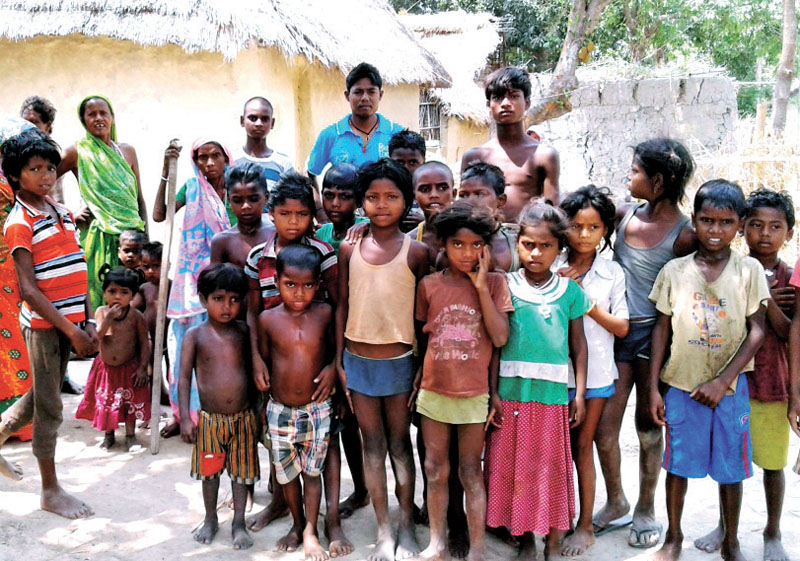Schools face difficulty retaining children from Musahar, Bantar communities
Mahottari, December 21
Children from the Musahar and Bantar communities are enrolled at schools as part of the ‘Welcome to School’ campaign every year. The campaign has especially targeted the Dalit and poor communities. But, retaining the children at schools is very difficult. School drop-out rate is high among children from these communities.
Extreme poverty and illiteracy are the main reasons for the high dropout rate, according to teachers. Bhangaha Municipality has high number of Musahar and Bantar population. These two communities belong to the Dalit communities with poor economic condition. “Although children from these two communities are enrolled at schools under the campaign every year, they stop coming to school after a few years,” said Kamal Bahadur Shrestha, a local school teacher in Bhangaha-5.
Shrestha has been in the teaching profession for the past 30 years and his experience is that it is difficult to convince parents of children from these communities to get their children enrolled at schools. He added that even if children are enrolled, it is hard to retain them at schools. “In my 30 years of service, only a few students from these communities have passed the Secondary Education Examination. We frequent each house in these communities and ask parents to enrol their kids at schools. But the children do not continue school,” Shrestha said. “Enrolling girl students is even harder,” he added.
Rinku Sada of Bhangaha-3, dropped out of school when she was in Grade IX. So did 14-year-old Ambika Sada from the same area. She dropped out while she was in Grade VIII. Similarly, Bina Sada left school when she was in Grade VII while Bisalu, Ruby, Ritam and Pabita dropped out of school when studying in Grade VI. Not single girl from Musaharitole at Bhangaha-3 has reached Grade X so far. Among the boys, only one, Simal Sada, has passed the SEE. There are 110 households in Musharitole.
Similarly, school dropout rate of children is high at Bantar community in Singyahi-3, Sakari, Palar, Siddhapur, Hatisarwa Majara, Dharmapur Anharaban and Harinamari.
There are 30 community schools, including five secondary level and 25 basic level schools near the settlements of Bantar community. “There are many schools near settlements of the Musahar and Bantar communities, but, not a single student from the communities has passed Grade X,” said Arun Bhujel, an official at the education section of Bhangaha Rural Municipality.
According to Musahar girls, the high dropout rate among children from the Musahar and Bantar communities is not only because of poverty and illiteracy. “The behaviour of school management and teachers towards them is also one of the reasons,” they said. “They don’t give us the scholarship amount meant for children from the backward and Dalit communities on time. Our parents do not have money to buy note books, pens and other stationery materials for us. So, we do not feel like going to school,” said Ambika Sada, a drop out. She said even teachers did not respond well when they asked questions. She added that instead the teachers chided them.
“We do not understand the lessons. During school exams you do not know how to answer the questions. So, there is no reason to go to school,” Ambika explained why children from the Dalit community did not like schools. Most of the Musahar and Bantar community girls said though they wanted to go to school, they were deprived of education because of lack of cooperation from family, school and the society.






